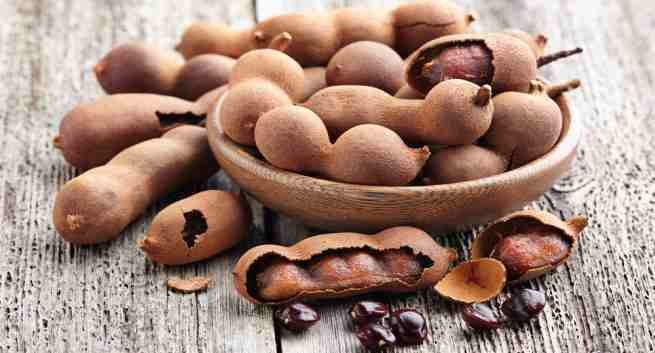Nutrition
Health benefits of Soya chunks

• soya chunks
Acts as a meat substitute
Vegetarians and those who suffer from protein deficiency can incorporate soya chunks into their diet. They help to make up for the recommended value of protein without tampering with one’s traditions.
Each 100 gram serving has 345 calories with 52 grams of protein. It indeed qualifies as an alternative to meat, yet provides extra protein as compared to chicken and lamb.
Promotes heart health
Soya chunks are rich in protein, omega3 fatty acids, fibre and low in saturated fat.
Also, a 2015 study published in the Molecules journal talks about the benefits of soya and its ability to lower the levels of bad cholesterol in the body. Thus, in addition, good cholesterol prevents several heart ailments, making soya chunks a heart-friendly food.
Aids in weight loss
This unique plant based protein is known to reduce body weight and fat mass. The fibre content in soya chunks keeps hunger at bay. In addition, they can keep you full for long hours.
Soya chunks have a greater thermogenic effect (energy needed above the basal metabolic rate to digest, absorb and metabolize food) than carbohydrates. Thus, when taken in correct proportions, soya chunks can aid in your weight loss journey.
It helps to reduce menopausal symptoms
Many women going through the menopause phase have hot flashes, night sweats, trouble sleeping, vaginal dryness, and mood swings. Dozens of small studies have looked at the effects of soy on these symptoms, especially hot flashes.
Soy chucks are rich in isoflavones, it’s a type of phytoestrogen. These are believed to work like estrogen and thus ease out symptoms of menopause.
Regulates hormonal imbalance in women
Due to phytoestrogens in soya chunks, women with irregular hormonal activity can eat soya chunks regularly.
In particular, postmenopausal women and those suffering from PCOS benefit the most. It imitates estrogen and regulates the menstrual cycle in women.
Improves digestive health
Both animal and human studies have shown that consumption of soy foods can increase the levels of bifidobacteria and lactobacilli in the gut, thus enhancing gut health.
Contains anti-inflammatory properties
Consumption of soy foods has been shown to have beneficial effects on multiple aspects of human health, including reduced risk of inflammation-related diseases, such as cardiovascular disease, diabetes, and certain cancers.
Regulates blood sugar levels
Soybean can be extremely beneficial for diabetics and should definitely be added to their diet.
A study from the University of Massachusetts Amherst found that soybean is rich in bioactive compounds known as isoflavones. These compounds are responsible for lowering the risk of diabetes and heart diseases. More importantly, the study noted that consuming soy-based foods can lead to a decrease in blood sugar levels and even improve tolerance of glucose in those who have been diagnosed with diabetes.
Source: https://www.healthifyme.com/
Nutrition
Benefits of Tamarind Juice

Tamarind juice is particularly abundant in vitamin C, which is important for a strong immune system, healthy skin and wound healing.
Additionally, tamarind provides significant amounts of B vitamins like thiamin, riboflavin and niacin, as well as essential minerals like potassium, magnesium, and iron.
– Antioxidant properties
Tamarind contains potent antioxidants, such as polyphenols and flavonoids, which combat harmful free radicals in the body. This oxidative stress reduction can help prevent cell damage and lower the risk of chronic diseases, including cancer.
-Digestive health
Tamarind contains dietary fibre and natural laxatives that promote regular bowel movements, alleviate constipation and improve overall gastrointestinal health.”
– Heart health
Regular consumption of tamarind juice may have a positive impact on cardiovascular health. It can help lower cholesterol levels due to its high fibre content and antioxidants, reducing the risk of heart disease.
– Anti-inflammatory properties
Tamarind juice does a great job in curbing inflammation in the body. High in anti-inflammatory compounds such as polyphenols and bioflavonoids, this property makes it potentially beneficial for individuals suffering from conditions like arthritis or chronic inflammatory diseases.
– High magnesium content
Tamarind is rich in magnesium- 110 mg per 120 g of pulp. This simply concludes that drinking tamarind is a convenient way to meet your daily magnesium requirements. It plays an important role in the formation of bones, regulates heart rhythm, and contraction of muscles, and keeps blood sugar levels under check.
Source; Healthshots.com
Nutrition
Tamarind drink (Saamia)

Ingredients
• 100 grams of tamarind seed (peeled including seeds)
• Water
• 50 grams of ginger
• 2 grams of alligator pepper
• 3 grams of cloves
• Sugar to taste
Preparation
• Peel and wash ginger, cloves, alligator pepper and blend.
• Soak tamarind overnight (optional)
• Boil water and pour over tamarind
• Soak for several hours
• Mash the mixture for the pulp to come off the seeds
• Add grounded or blended spices to the mixture
• Add water and boil for 30 minutes
• Put off fire and allow to cool
• Sieve and strain to get rid of particles (spices and pulp)
www.thespectatoronline.com
Your Weekend Companion







